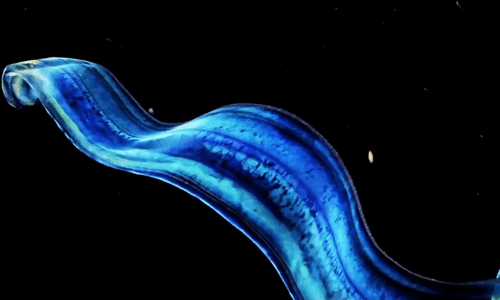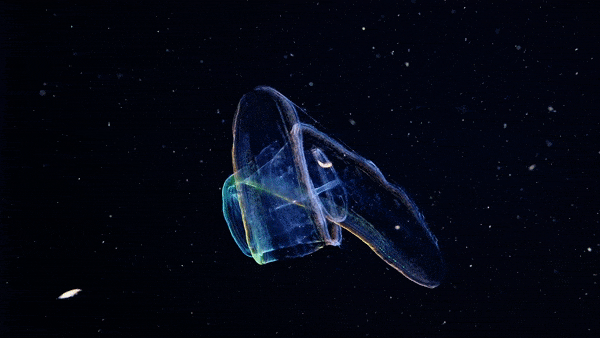The Close-up Of The Andromeda Galaxy From The Hubble Space Telescope Shows How Many Stars There Really

The close-up of the Andromeda Galaxy from the Hubble Space Telescope shows how many stars there really are.
source
More Posts from Ad-astra-affecte-spe and Others

Galactic center of Milky Way © cosmic_background

South Island, New Zealand




Jupiter Swirling Storms l NASA Juno


The monsters that live on the Sun are not like us. They are larger than the Earth and made of gas hotter than in any teapot. They have no eyes, but at times, many tentacles. They float. Usually, they slowly change shape and just fade back onto the Sun over about a month. Sometimes, though, they suddenly explode and unleash energetic particles into the Solar System that can attack the Earth. Pictured is a huge solar prominence imaged almost two weeks ago in the light of hydrogen. Captured by a small telescope in Gilbert, Arizona, USA, the monsteresque plume of gas was held aloft by the ever-present but ever-changing magnetic field near the surface of the Sun. Our active Sun continues to show an unusually high number of prominences, filaments, sunspots, and large active regions as solar maximum approaches in 2025.


Milky Way by Jonathon Wilcox









The Venus girdle (Cestum veneris) is a comb jelly in the family Cestidae. The colorless species are transparent when suspended in water, except for their iridescent rows of comb plates. In other words, they majestic as fuck. Love to sea it 🌊









Exploration is in our nature. We began as wanderers, and we are wanderers still.
l photo: Sara Hunt l quote: Carl Sagan
Hey. Why isn’t the moon landing a national holiday in the US. Isn’t that fucked up? Does anyone else think that’s absurd?
-
 reblogger-of-tingz reblogged this · 1 month ago
reblogger-of-tingz reblogged this · 1 month ago -
 ok321letsgo reblogged this · 1 month ago
ok321letsgo reblogged this · 1 month ago -
 in0sen-blog liked this · 2 months ago
in0sen-blog liked this · 2 months ago -
 harmony3s liked this · 2 months ago
harmony3s liked this · 2 months ago -
 sub-91 liked this · 2 months ago
sub-91 liked this · 2 months ago -
 flippertygender liked this · 2 months ago
flippertygender liked this · 2 months ago -
 scooter58 liked this · 2 months ago
scooter58 liked this · 2 months ago -
 strangetikigod reblogged this · 2 months ago
strangetikigod reblogged this · 2 months ago -
 vanillaicebear liked this · 2 months ago
vanillaicebear liked this · 2 months ago -
 bi4ka liked this · 2 months ago
bi4ka liked this · 2 months ago -
 azshallar liked this · 2 months ago
azshallar liked this · 2 months ago -
 fvckinganna liked this · 2 months ago
fvckinganna liked this · 2 months ago -
 shotgunshellsandfeathers liked this · 2 months ago
shotgunshellsandfeathers liked this · 2 months ago -
 strangetikigod liked this · 2 months ago
strangetikigod liked this · 2 months ago -
 ok321letsgo liked this · 2 months ago
ok321letsgo liked this · 2 months ago -
 ladythatsmyskull reblogged this · 2 months ago
ladythatsmyskull reblogged this · 2 months ago -
 imagine-valhalla liked this · 2 months ago
imagine-valhalla liked this · 2 months ago -
 dilah1 liked this · 2 months ago
dilah1 liked this · 2 months ago -
 mermaidmoo-253 liked this · 2 months ago
mermaidmoo-253 liked this · 2 months ago -
 dalecoopers liked this · 2 months ago
dalecoopers liked this · 2 months ago -
 brinvilliers reblogged this · 2 months ago
brinvilliers reblogged this · 2 months ago -
 hexqueensupreme reblogged this · 2 months ago
hexqueensupreme reblogged this · 2 months ago -
 hexqueensupreme liked this · 2 months ago
hexqueensupreme liked this · 2 months ago -
 prettycatboy liked this · 2 months ago
prettycatboy liked this · 2 months ago -
 mazapan420 liked this · 2 months ago
mazapan420 liked this · 2 months ago -
 sticky-notepad liked this · 2 months ago
sticky-notepad liked this · 2 months ago -
 brokenblossoms liked this · 2 months ago
brokenblossoms liked this · 2 months ago -
 vampirekilmer liked this · 2 months ago
vampirekilmer liked this · 2 months ago -
 mabelwinters liked this · 2 months ago
mabelwinters liked this · 2 months ago -
 sagethefae liked this · 2 months ago
sagethefae liked this · 2 months ago -
 wtfc-huh liked this · 2 months ago
wtfc-huh liked this · 2 months ago -
 babybatreads liked this · 2 months ago
babybatreads liked this · 2 months ago -
 therulingqueen liked this · 2 months ago
therulingqueen liked this · 2 months ago -
 round-pomelo reblogged this · 2 months ago
round-pomelo reblogged this · 2 months ago -
 panforgfart liked this · 2 months ago
panforgfart liked this · 2 months ago -
 loveliesthoneybun reblogged this · 2 months ago
loveliesthoneybun reblogged this · 2 months ago -
 loveliesthoneybun liked this · 2 months ago
loveliesthoneybun liked this · 2 months ago -
 feralviscosity reblogged this · 2 months ago
feralviscosity reblogged this · 2 months ago -
 feralviscosity liked this · 2 months ago
feralviscosity liked this · 2 months ago -
 slacket liked this · 2 months ago
slacket liked this · 2 months ago -
 corsairie liked this · 2 months ago
corsairie liked this · 2 months ago -
 eclipse-darling liked this · 2 months ago
eclipse-darling liked this · 2 months ago -
 sewerwitchlove reblogged this · 2 months ago
sewerwitchlove reblogged this · 2 months ago -
 salad-days-witch reblogged this · 2 months ago
salad-days-witch reblogged this · 2 months ago -
 sewerwitchlove liked this · 2 months ago
sewerwitchlove liked this · 2 months ago -
 hornymotionalcookie reblogged this · 2 months ago
hornymotionalcookie reblogged this · 2 months ago -
 aierenthefan liked this · 2 months ago
aierenthefan liked this · 2 months ago -
 blackcatzattack liked this · 2 months ago
blackcatzattack liked this · 2 months ago -
 gyusbrownie liked this · 2 months ago
gyusbrownie liked this · 2 months ago -
 ravensstooker liked this · 2 months ago
ravensstooker liked this · 2 months ago

★•Astronomy, Physics, and Aerospace•★ Original and Reblogged Content curated by a NASA Solar System Ambassador
204 posts






















